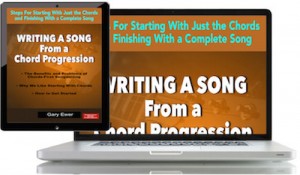Constructing songs so that we hear verses, choruses, bridges, and so on, is a good and easy way to ensure that your music incorporates contrast. Even before hearing a particular song, we know that the chorus is likely to be higher in pitch, that the chorus chords will probably be stronger and shorter than the verse, that we can anticipate that the bridge melody and chords will wander into new key areas, and so on.
But then there are the songs where the declaring of specific sections of songs to be verses and choruses is not clear. A good example of this is McCartney’s “Martha My Dear“, from The Beatles’ White Album. It’s interesting to make note of how many times we hear this song move into what appears to be a new section, but those sections don’t seem to take on the traditional verse-chorus relationship:

You’ll also note how unimportant it is in that song to know if a section is a verse, a chorus or a bridge. Sometimes we’ll hear a song, like America’s “Ventura Highway”, which sounds as though it contains a double chorus, while others hear the first verse being followed by a pre-chorus before the chorus proper.
Do you write songs by working out the chords first? You need “Writing a Song From a Chord Progression”, which shows you how to do the chords-first method most effectively. It’s part of “The Essential Secrets of Songwriting” 10-eBook Deluxe Bundle package. Read more..
But labeling is, in these instances, inconsequential to the effect of the music. What’s most important is that the music is sectionalized. It’s the contrast provided by sections that’s important, not what we call them.
You may find that the sound of one section you’re writing leads quite naturally to something different to follow it, and that it’s difficult to label that new section; you might find that the new section sounds like:
- part 2 of the verse;
- a pre-chorus leading to an eventual chorus;
- a chorus.
And ultimately, it doesn’t much matter. What matters is that you’ve got a new section of music that contrasts with the music that’s come before it, and that is what audiences need to hear.
As you move from one section to the next in your song, and you find that you’re instinctively not following the traditional verse-chorus formula, just consider the following:
- The chord progression of each new section has a new focus. In “Martha My Dear”, the song is in a major key and starts on a major chord. In the next section, “Hold your head up..”, the chords change focus, starting on Dm.
- Move melodies upward as a song progresses to a new section. Even without the standard verse-chorus format, it sound natural for new melodies to move higher than previous ones.
- Think carefully about instrumentation. Each section of “Martha My Dear” features new instruments, moving from piano, then adding light brass, then we get a change in the basic guitar rhythms, then moving on to full brass section, and so on. These changes help define the sections, and that’s important.
- Use repetition to strengthen the structure of your music. If you find that your song has three or four sections that work well together, try repeating those sections as a complete unit, rather than seeking to compose a fifth and sixth sections. Repeating of things that have happened earlier in the song is an important musical characteristic that audiences need.
 Written by Gary Ewer. Follow Gary on Twitter
Written by Gary Ewer. Follow Gary on Twitter
 “Hooks and Riffs: How They Grab Attention, Make Songs Memorable, and Build Your Fan Base” shows you, by using classic examples, how hooks make songs interesting and listenable. It then gives you three different methods for writing hooks that you can follow to improve your songwriting technique. This eBook is part of the 10-ebook DELUXE BUNDLE PACKAGE. Buy it now to take advantage of today’s FREE DEAL. Read more..
“Hooks and Riffs: How They Grab Attention, Make Songs Memorable, and Build Your Fan Base” shows you, by using classic examples, how hooks make songs interesting and listenable. It then gives you three different methods for writing hooks that you can follow to improve your songwriting technique. This eBook is part of the 10-ebook DELUXE BUNDLE PACKAGE. Buy it now to take advantage of today’s FREE DEAL. Read more..












Pingback: Gary Ewer – When You Can’t Tell If You’re Hearing a Verse, a Chorus, or Something Else – 3-14-16 | I Write The Music
Thanks again Gary!!